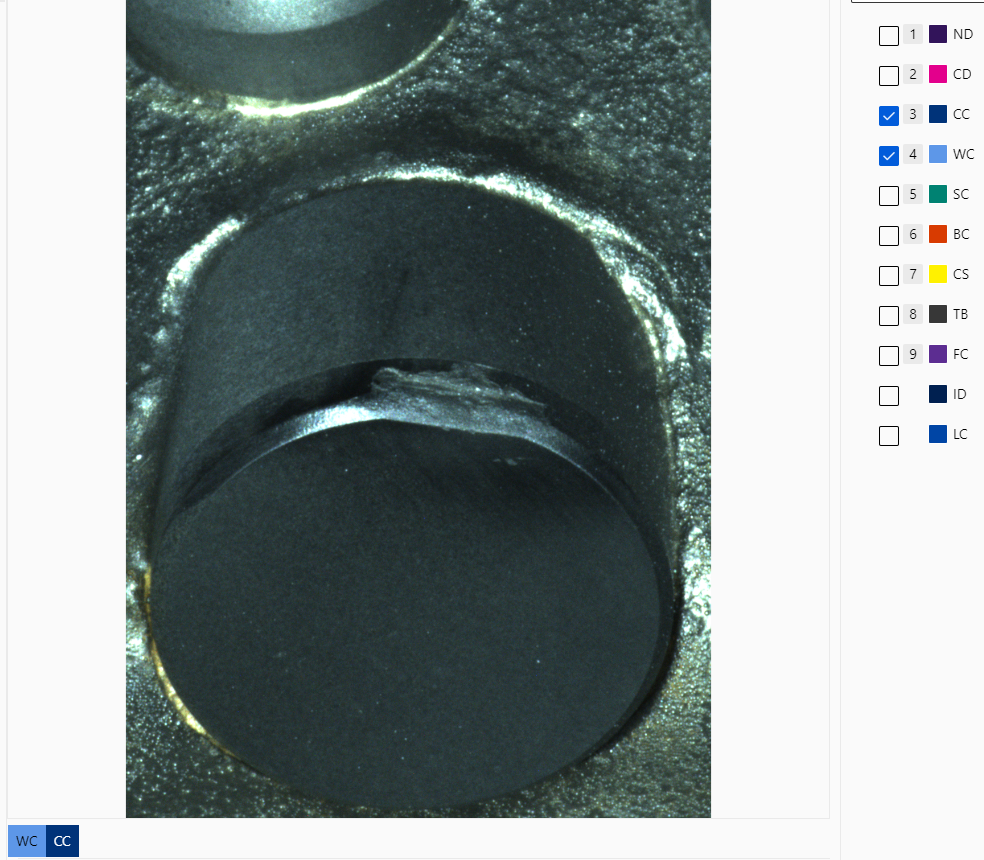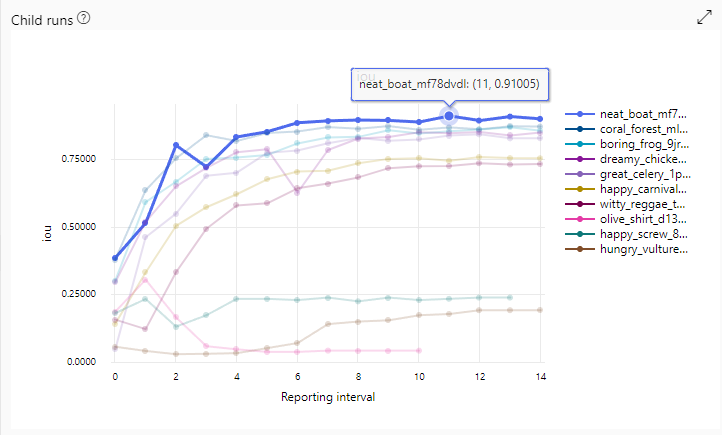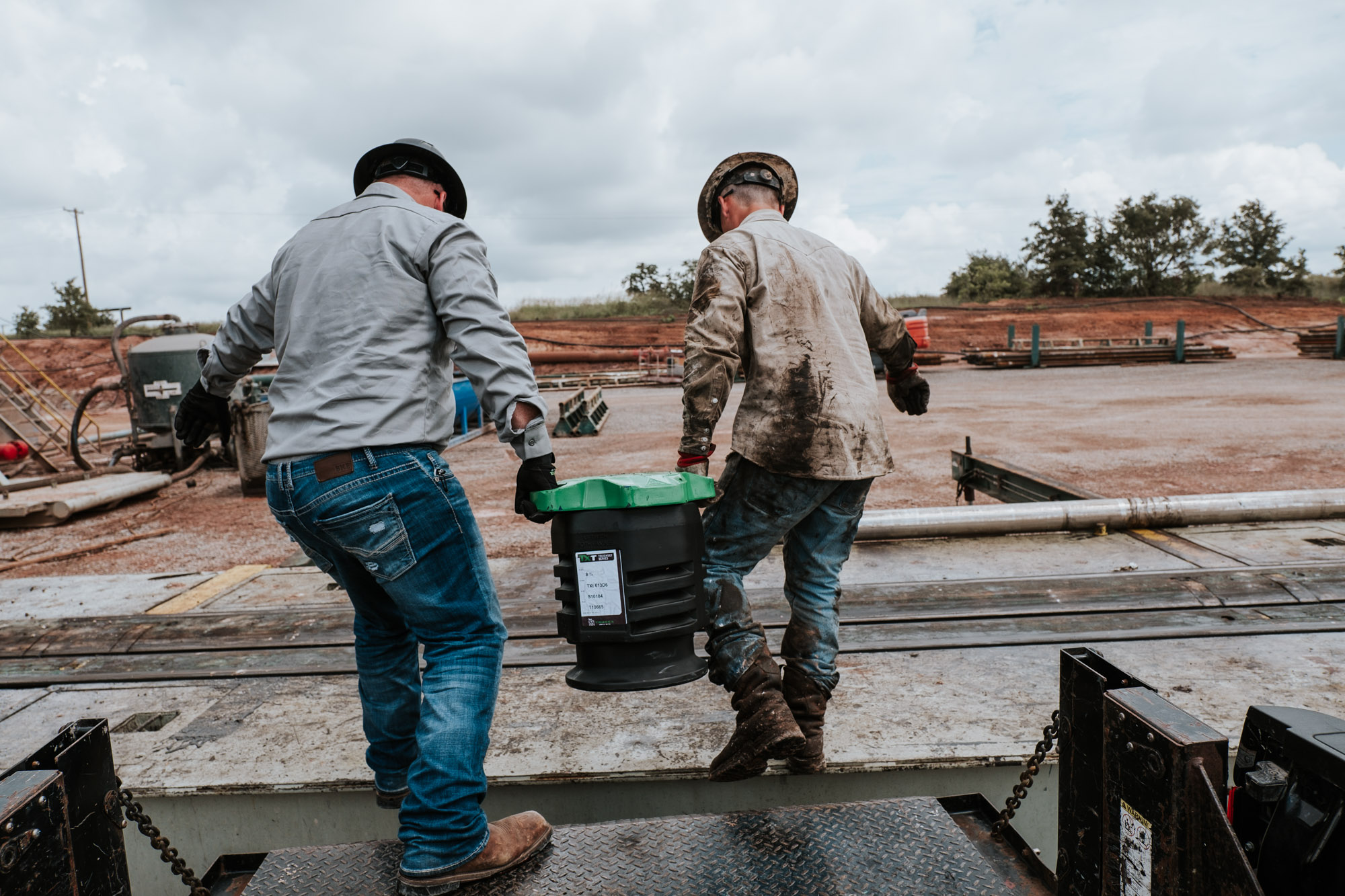Summary
Taurex has applied machine learning in the classification of damage modes on cutters of dull bits. This is one of many projects within the evolution of Taurex’s BitVision™ processes and product line.
The scope of this work includes:
- The infrastructure for labeling, training, and deploying machine learning models
- The development of machine learning models capable of classifying damage modes using images taken from individual cutters
- The automated classification of damage modes for each cutter on each dull bit through the Taurex BitVision™ process
- The storage and downstream availability of machine learning outputs
Conclusion
Taurex has successfully implemented machine learning to classify damage modes of cutters and automated its usage for each cutter that is photographed by the automated BitVision™ process. The machine learning models classify damage modes at a very high level of accuracy due to the system’s impeccable image and data quality, but Taurex remains committed to continuous model improvement.
Infrastructure
The machine learning infrastructure put in place sits on top of open-source machine learning technologies through which the following is enabled:
- The labeling of images with consensus.
- The training of models.
- The versioning and storage of trained models.
- The deployment of both online endpoints and on-prem executable models.
Machine Learning Models
Labelling
Taurex’s subject matter experts labelled thousands of cutter images for the following damage modes:
- Chamfer Damage
- Chipped Cutter
- Worn Cutter
- Spalled Cutter
- Broken Cutter
- Tangential Break
- Complete Spall
- Face Crack
- Indeterminate Damage
- Lost Cutter
Of the thousands of cutter images labelled, models were trained only on images having consensus across multiple SME’s.

Figure 1 – Showing the labeling interface used to label each cutter image.
Model Training
The images labelled with consensus were used to train multiple models thus far, with more experimentation currently underway as part of our continuous model improvement philosophy. Models and their associated training artifacts were serialized and registered to the model registry using an open-source machine learning lifecycle platform.
Verbiage
- Auto tune: The process of automatically adjusting the hyperparameters and model configurations to find the best-performing model.
- Accuracy: The measure of how many predicted labels match the actual labels.
- IoU (Intersection of Union): The measure of overlap between the predicted labels and the ground-truth labels.
- ViT (vision transformer): A type of deep learning architecture designed for computer vision tasks.
Results:
The best-performing model was a ViT model auto tuned for 6 hours and 58 minutes resulting in 85.514% accuracy and 91.005% IoU.

Figure 2 – Showing shows the IoU results across the 10 trials conducted during the auto tuning process.
Automation
The highest-performing model was used to automatically capture inferences from each cutter image taken during the BitVision™ process.
Verbiage
- ONNX (Open Neural Network Exchange): An open format built to represent machine learning models.
- API (application programming interface): A set of rules and protocols that allow different software applications to communicate with each other over the internet.
- SDK (Software Development Kit): A set of tools, libraries, and documentation that developers use to build software applications.
Results:
Two options were considered for automation:
- The usage of ONNX to package the model for offline usage during the BitVision™ process.
- The usage of API endpoints for online usage during the BitVision™ process.
Ultimately, the usage of ONNX was selected as the preferred implementation because it is currently the most efficient option. As the BitVision™ process scales, the usage of online API endpoints might become the preferred option.
Taurex created a Python SDK and event-driven workflow for running each cutter image taken through the model in real time during the BitVision™ process.
Taurex created an API for interacting with and storing the outputs of the model.
In conclusion, Taurex has successfully harnessed the power of machine learning to classify damage modes on cutters and automated this process within their BitVision™ system. The machine learning models exhibit a high level of accuracy thanks to the exceptional quality of the image and data inputs. However, Taurex remains committed to continuous model improvement, ensuring even more precise results in the future. With their commitment to ongoing improvement and automation, Taurex is poised to continue revolutionizing this aspect of their industry.

